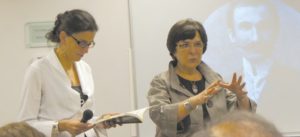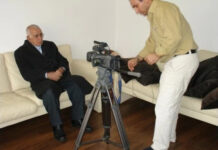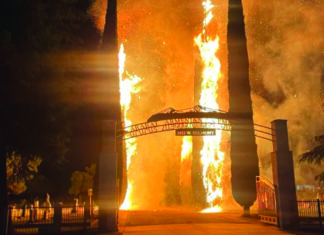
By Aram Arkun
Mirror-Spectator Staff
FAIR LAWN, N.J. — Dr. Rita Soulahian Kuyumjian presented her three new books concerning the Armenian Genocide at St. Leon Armenian Church here on April 13 in an event cosponsored by the church and the Tekeyan Cultural Association. This was one in a series of book presentations she has been making recently in the US and Canada. The trilogy of books was co-published by the Tekeyan Cultural Association and the Gomidas Institute in 2010 and dedicated to the 95th anniversary of the Armenian Genocide.
The annihilation of the lives of the victims of the Armenian Genocide, remembered each year by the Armenians and others, can easily be reduced to platitudes. Our knowledge of the Armenian Genocide often does not extend beyond a basic outline of events, combined with an instinctive revulsion and desire for some kind of justice to be seen on this earth. The few survivors that are still with us were children in 1915 and their personal memories are consequently restricted by their age at the time. Yet there are other resources that can help us better understand what the true nature of this event was. Memoirs written by adult survivors are among the most important, and luckily for those who do not read Armenian, one by one, many of the most important ones are being translated into English. In recent years, for example, the memoirs of Bishop Grigoris Balakian, Mikayel Shamdanjian and Patriarch Zaven Der Yeghiayan have been made accessible to a larger group of readers in new English-language publications.
Kuyumjian’s efforts have contributed several more “classics” to this group of important works with the publication of Aram Andonian’s memoirs on the arrest and exile of the Armenian intellectuals of Constantinople, and Teotig’s collection of short biographies of the deported and murdered leaders of the Ottoman Armenians, accompanied by an introductory biography of Teotig. She also has written a short biography of Aram Andonian.









